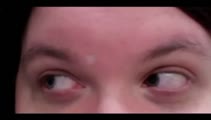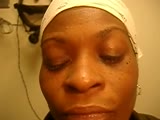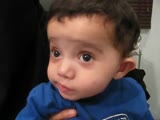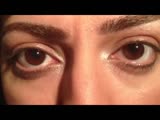Collection of materials relating to neuro-ophthalmology as part of the Neuro-Ophthalmology Virtual Education Library.
NOVEL: https://novel.utah.edu/
TO
Filters: Collection: "ehsl_novel_novel"
| Title | Creator | Description | Subject | ||
|---|---|---|---|---|---|
| 1 |
 |
Anisocoria | Karl C. Golnik, MD | This is a narrated PowerPoint presentation that covers the common causes of anisocoria. | Pupil; Anisocoria |
| 2 |
 |
Anisocoria (Italian) | North American Neuro-Ophthalmology Society | The pupil in the right eye and left eye are not the same size. | Anisocoria; Patient Brochure |
| 3 |
 |
Anisocoria (Telugu) | North American Neuro-Ophthalmology Society | The pupil in the right eye and left eye are not the same size. | Anisocoria; Patient Brochure |
| 4 |
 |
Anterior Ischemic Otic Neuropathy (Telugu) | North American Neuro-Ophthalmology Society | Loss of blood supply to the optic nerve results in diminished visual acuity. | Anterior Ischemic Optic Neuropathy; Patient Brochure |
| 5 |
 |
Apraxia of Eyelid Opening | Raed Behbehani, MD | Patient has Parkinson disease and has developed this condition following deep brain stimulation. | Apraxia; Eyelid Opening |
| 6 |
 |
Bilateral Acquired Brown's Syndrome | Ryan D. Walsh, MD; Collin McClelland, MD | A 27 year old female with a history of Sjogren's syndrome reported a 2 year history of a vertical binocular diplopia with looking up-and-to-the right. She has also noticed an audible "click" when positioning her eyes in this direction. As depicted in the video, when attempting to look up-and-to-the... | Brown's syndrome; Brown syndrome; hypertropia; diplopia; disorder of ocular motility; Sjogren's syndrome |
| 7 |
 |
Bitemporal Hemianopia | Julia Mathew Padiyedathu, MD; Rudrani Banik, MD | Power point of case presentation of patient with painless progressive vision loss, optic nerve cupping with pallor and history of significant alcohol and tobacco use. Patient initially diagnosed at outside institution with normal tension glaucoma and toxic optic neuropathy. Exam suggests bitempora... | Ditemporal Visual Field Defect; Toxic Optic Neuropathy; Pituitary Adenoma; Compressive Optic Neuropathy |
| 8 |
 |
Blefarospasmo Essenziale Benigno (Italian) | North American Neuro-Ophthalmology Society | Uncontrolled blinking, squeezing, and eyelid closure that occurs in both eyes without an apparent environmental cause. | Blepharospasm; Patient Brochure |
| 9 |
 |
Blepharospasm (Telugu) | North American Neuro-Ophthalmology Society | Uncontrolled blinking, squeezing, and eyelid closure that occurs in both eyes without an apparent environmental cause. | Blepharospasm; Patient Brochure |
| 10 |
 |
Carotid Cavernous Fistula | Adam Botwinick, MD; Rudrani Banik, MD | Power point of case presentation of 66-year-old female with chronic red eye OU x 2 months, misdiagnosed as conjunctivitis. Exam showed dilated, tortuous episcleral vessels OU with proptosis OU and elevated intraocular pressure. MRI showed suspicion of carotid cavernous fistula (CCF), confirmed by ... | Carotid Cavernous Fistula; Dural CCF; Chemosis; Corkscrew Vessels; Proptosis; Embolization; Neurointerventional Radiology |
| 11 |
 |
Cogan's Lid Twitch Sign | Raed Behbehani, MD | Cogan's lid twitch sign is a twitch sign of he upper lid upon looking straight from a sustained downgaze position. It is associated with Ocular Myasthenia Gavis. | Myasthenia; Ptosis; Lid Twitch |
| 12 |
 |
Congenital Oculomotor Apraxia | Raed Behbehani, MD | Congenital Ocular Motor Apraxia is an uncommon condition that causes children to have difficulty moving their eyes horizontally or from side to side. They are usually unable to quickly move their eyes from side to side and often have to turn their head (head jerking) and not just their eyes to track... | Oculomotor Apraxia |
| 13 |
 |
Downbeat Nystagmus Anti-GAD Cerebellar Syndrome | Raed Behbehani, MD | A patient with Anti-GAD positive Cerebellar syndrome with ataxia and opsoclonus due to downbeat nystagmus , treated with Baclofen with some improvement. | Downbeat Nystagmus |
| 14 |
 |
Dry Eye Syndrome (Telugu) | North American Neuro-Ophthalmology Society | People with abnormalities of the tear film are diagnosed with "dry eyes", but some patients with "dry eyes" may not feel that their eyes are "dry". Itching, burning, a scratchy sensation, a sensation that there is sand or grit in the... | Dry Eye Syndrome; Patient Brochure |
| 15 |
 |
Emianopsia Omonima (Italian) | North American Neuro-Ophthalmology Society | This refers to an absence of vision towards one side of the visual world in each eye. The damage that caused this problem is in the brain and not in the eyes. | Homonymous Hemianopsia; Patient Brochure |
| 16 |
 |
Hemifacial Spasm (Italian) | North American Neuro-Ophthalmology Society | Involuntary contractions, called "spasms," of the muscles on one side of the face. The affected side of the face seems to "scrunch up" while the other side of the face remains normal. | Hemifacial Spasm; Patient Brochure |
| 17 |
 |
Hemifacial Spasm (Telugu) | North American Neuro-Ophthalmology Society | Involuntary contractions, called "spasms," of the muscles on one side of the face. The affected side of the face seems to "scrunch up" while the other side of the face remains normal. | Hemifacial Spasm; Patient Brochure |
| 18 |
 |
Homonymous Hemianopia (Telugu) | North American Neuro-Ophthalmology Society | This refers to an absence of vision towards one side of the visual world in each eye. The damage that caused this problem is in the brain and not in the eyes. | Homonymous Hemianopsia; Patient Brochure |
| 19 |
 |
The Ice Pack Test For Myasthenia | Ryan D. Walsh, MD; Collin McClelland, MD | The ice pack test is a simple, low-tech, bedside test that can readily be applied in the outpatient clinic or hospital setting, with minimal risk or discomfort. The ice pack test is used in patients with ptosis to help support or refute a diagnosis of myasthenia. We describe how to perform and int... | Ice Pack Test; Ice Test; Myasthenia Gravis; Ocular Myasthenia; Ptosis; Diagnostic Tests |
| 20 |
 |
Marcus Gunn Jaw Winking | Raed Behbehani, MD | Marcus Gunn Jaw Wink causes congenital ptosis and eyelid retraction associated with jaw movement or sucking. It's due to "miswiring" between 3rd and 5th cranial nerves. The treatment of ptosis in children is surgery to prevent amblyopia . | Jaw Winking; Marcus Gunn |
| 21 |
 |
Microvascular Cranial Nerve Palsy (Telugu) | North American Neuro-Ophthalmology Society | Microvascular cranial nerve palsy is one of the most common causes of double vision in the older poulation. They are often referred to as "diabetic" palsies. They will resolve without leaving any double vision. | Microvascular Cranial Nerve Palsy; Patient Brochure |
| 22 |
 |
Microvascular Cranial Nerves Palsy (Italian) | North American Neuro-Ophthalmology Society | Microvascular cranial nerve palsy is one of the most common causes of double vision in the older poulation. They are often referred to as "diabetic" palsies. They will resolve without leaving any double vision. | Microvascular Cranial Nerve Palsy; Patient Brochure |
| 23 |
 |
Migraine (Italian) | North American Neuro-Ophthalmology Society | Headache on one or both sides of the brain, and may include symptoms of nausea, vomiting, and sensitivity to light. | Migraine; Patient Brochure |
| 24 |
 |
Migraine (Telugu) | North American Neuro-Ophthalmology Society | Headache on one or both sides of the brain, and may include symptoms of nausea, vomiting, and sensitivity to light. | Migraine; Patient Brochure |
| 25 |
 |
Myasthenia Gravis (Italian) | North American Neuro-Ophthalmology Society | This is an autoimmune condition where the body's immune system has damaged receptors on your muscles and can result in double vision or drooping lid | Myasthenia Gravis; Patient Brochure |
